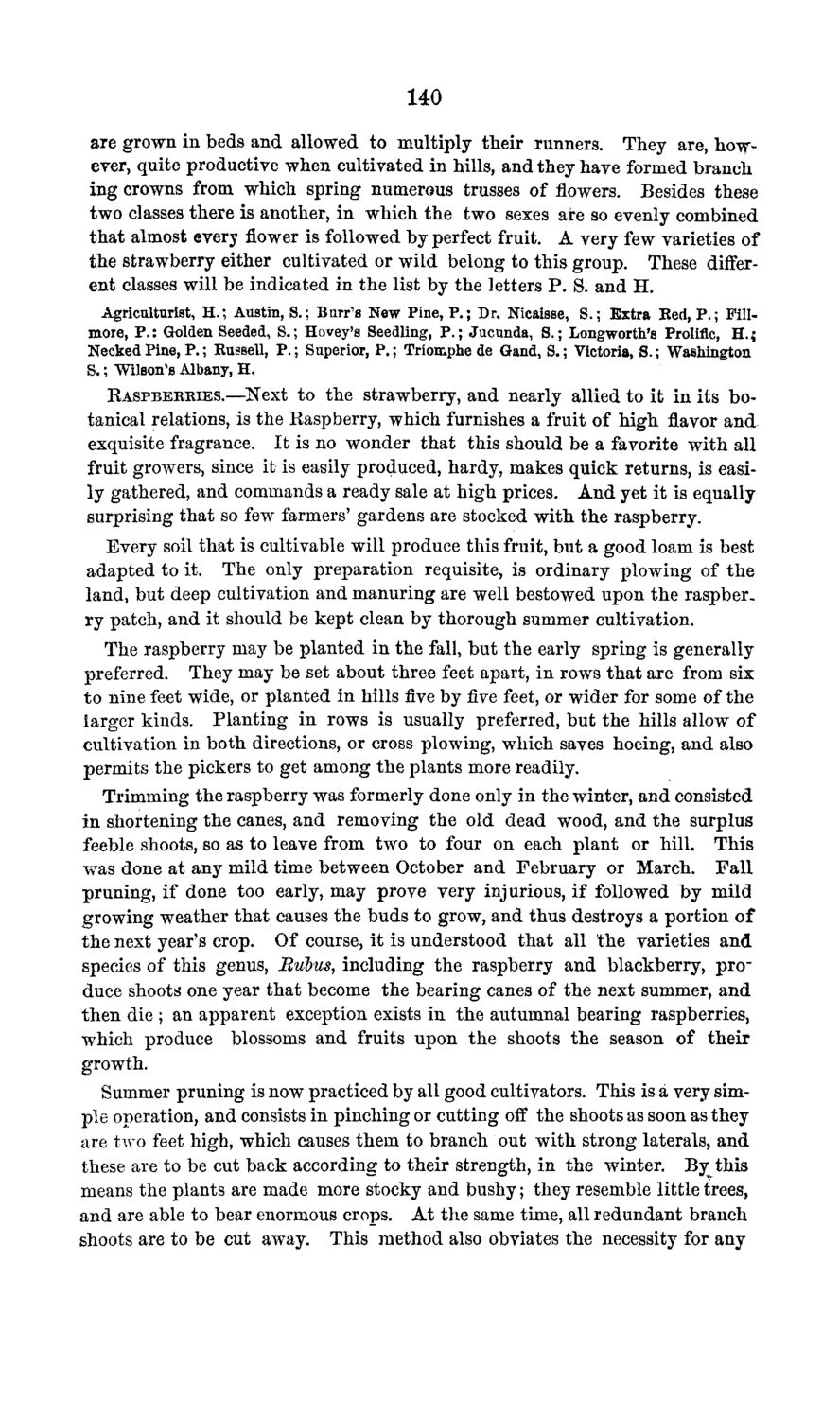| |
| |
Caption: Board of Trustees Minutes - 1869
This is a reduced-resolution page image for fast online browsing.

EXTRACTED TEXT FROM PAGE:
140 are grown in beds and allowed to multiply their runners. They are, however, quite productive when cultivated in hills, and they have formed branch ing crowns from which spring numerous trusses of flowers. Besides these two classes there is another, in which the two sexes aire so evenly combined that almost every flower is followed by perfect fruit. A very few varieties of the strawberry either cultivated or wild belong to this group. These different classes will be indicated in the list by the letters P. S. and H. Agriculturist, H.; Austin, S.; Burr's New Pine, P.; Dr. Nicaisse, S.; Extra Red, P.; Fillmore, P.: Golden Seeded, S.; Hovey's Seedling, P.; Jucunda, S.; Longworth's Prolific, R.; Necked Pine, P.; Russell, P.; Superior, P.; Triomphe de Gand, S.; Victoria, S.; Washington S.; Wilson's Albany, H. RASPBERRIES.—Next to the strawberry, and nearly allied to it in its botanical relations, is the Raspberry, which furnishes a fruit of high flavor and exquisite fragrance. It is no wonder that this should be a favorite with all fruit growers, since it is easily produced, hardy, makes quick returns, is easily gathered, and commands a ready sale at high prices. And yet it is equally surprising that so few farmers' gardens are stocked with the raspberry. Every soil that is cultivable will produce this fruit, but a good loam is best adapted to it. The only preparation requisite, is ordinary plowing of the land, but deep cultivation and manuring are well bestowed upon the raspber. ry patch, and it should be kept clean by thorough summer cultivation. The raspberry may be planted in the fall, but the early spring is generally preferred. They may be set about three feet apart, in rows that are from six to nine feet wide, or planted in hills five by five feet, or wider for some of the larger kinds. Planting in rows is usually preferred, but the hills allow of cultivation in both directions, or cross plowing, which saves hoeing, and also permits the pickers to get among the plants more readily. Trimming the raspberry was formerly done only in the winter, and consisted in shortening the canes, and removing the old dead wood, and the surplus feeble shoots, so as to leave from two to four on each plant or hill. This was done at any mild time between October and February or March. Fall pruning, if done too early, may prove very injurious, if followed by mild growing weather that causes the buds to grow, and thus destroys a portion of the next year's crop. Of course, it is understood that all the varieties and species of this genus, Bulus1 including the raspberry and blackberry, produce shoots one year that become the bearing canes of the next summer, and then die ; an apparent exception exists in the autumnal bearing raspberries, which produce blossoms and fruits upon the shoots the season of their growth. Summer pruning is now practiced by all good cultivators. This is a very simple operation, and consists in pinching or cutting off the shoots as soon as they are two feet high, which causes them to branch out with strong laterals, and these are to be cut back according to their strength, in the winter. By this means the plants are made more stocky and bushy; they resemble little trees, and are able to bear enormous crops. At the same time, all redundant branch shoots are to be cut away. This method also obviates the necessity for any
| |